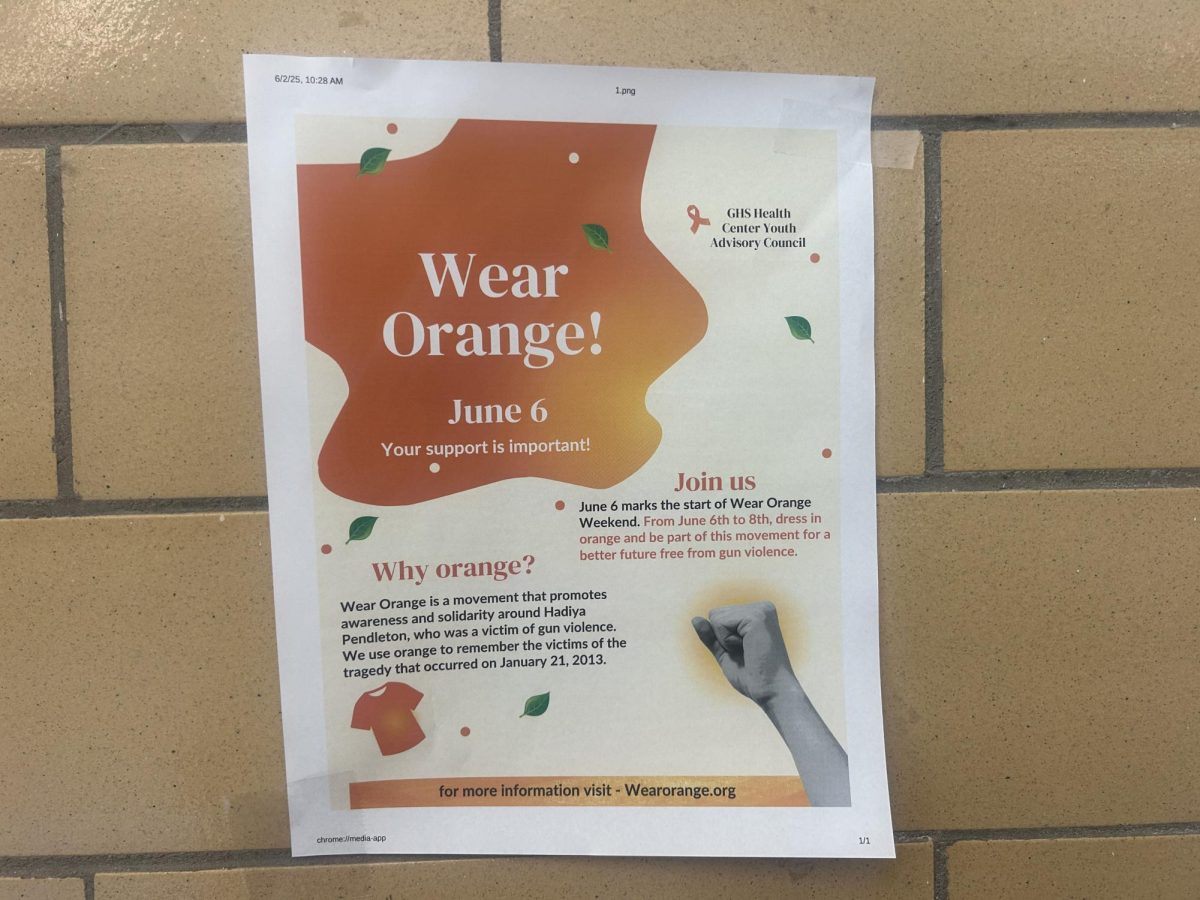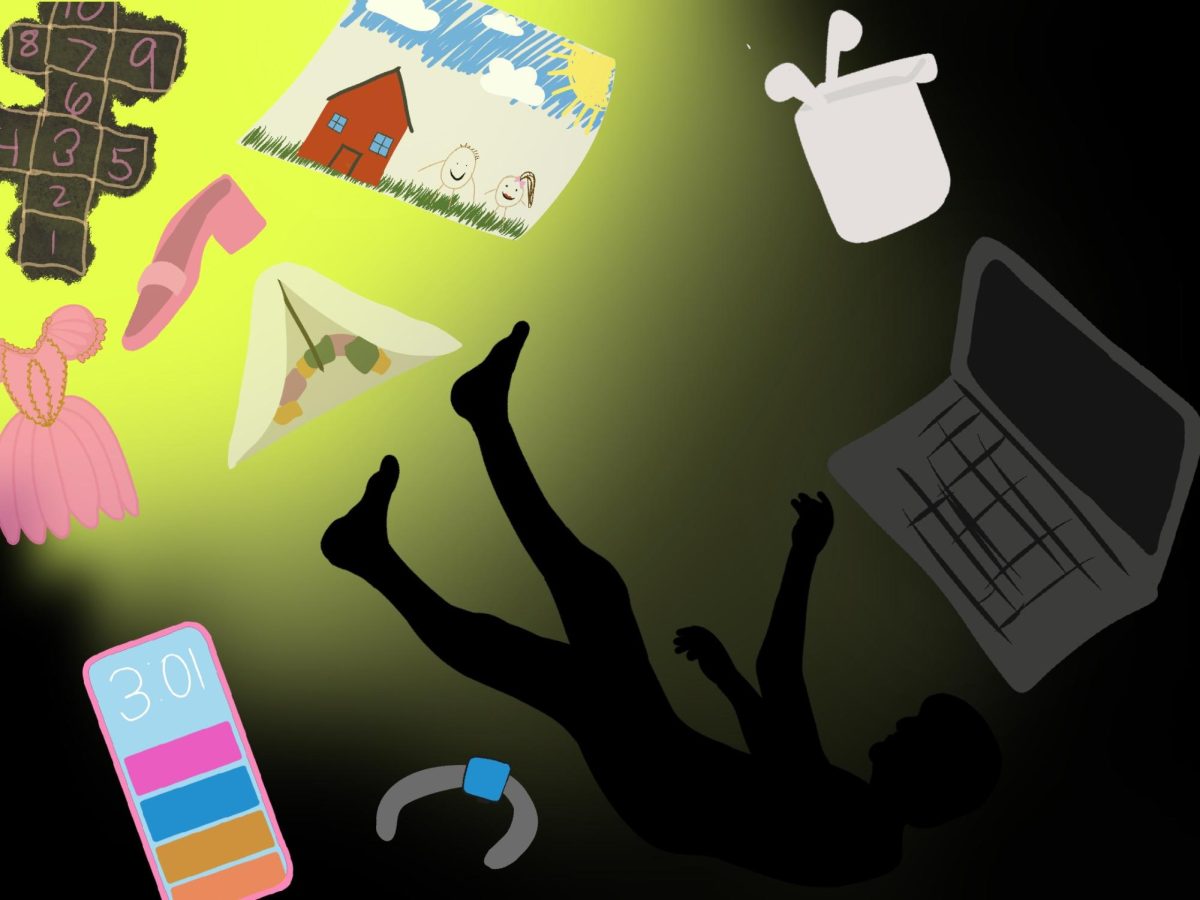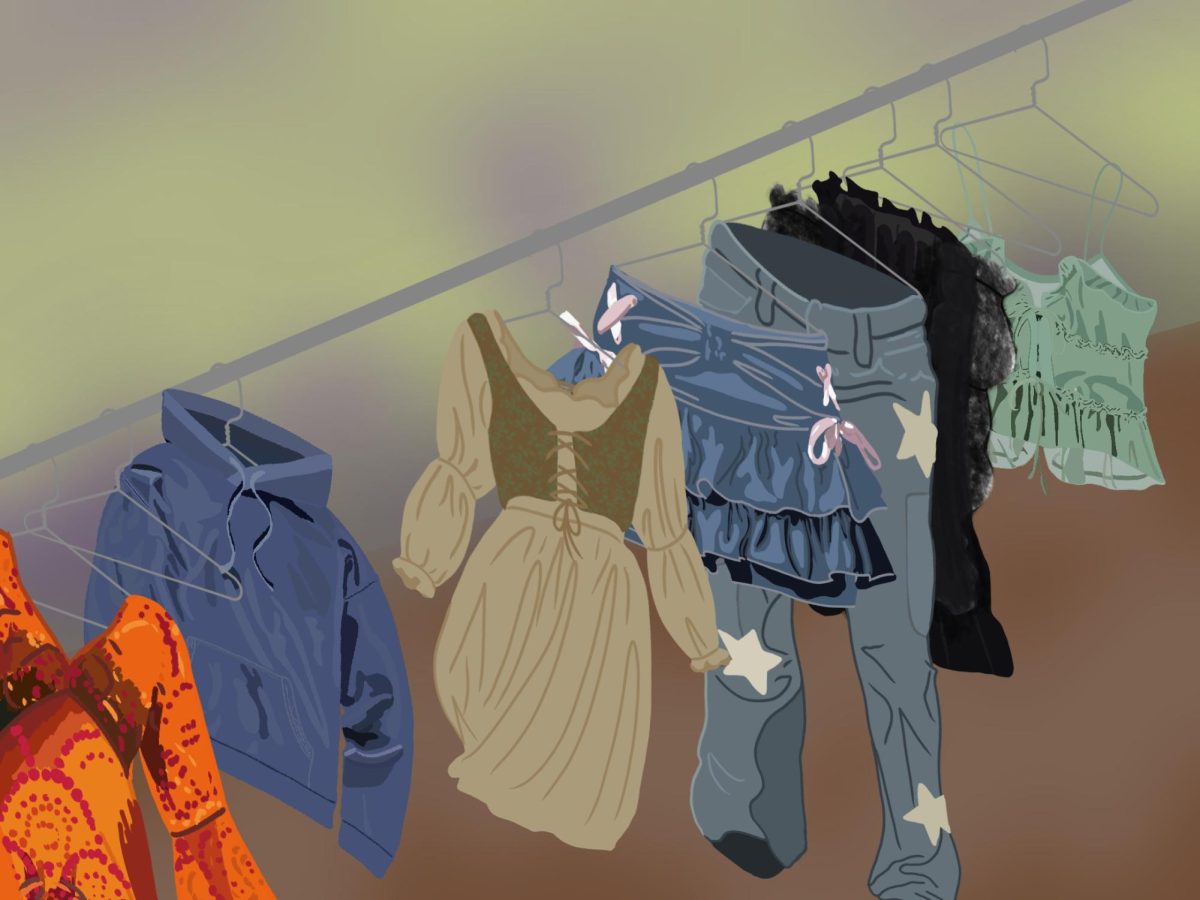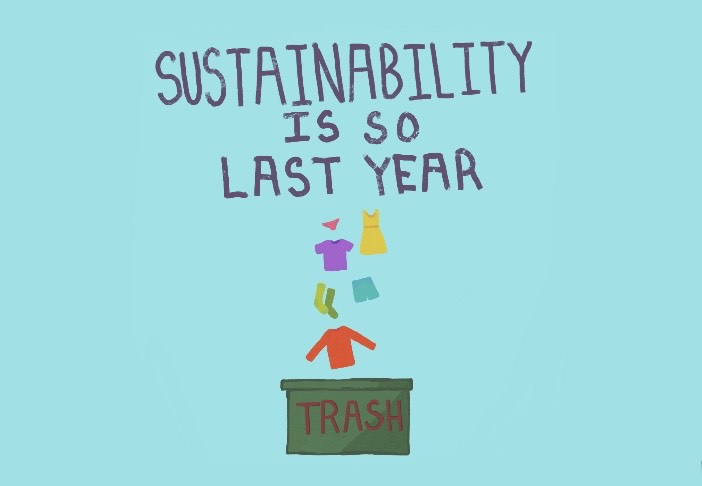Microtrends are destroying fashion, promoting overconsumption, and worst of all, they’re not even cute.
Digital art by Willow Barry satirizes overconsumption of fast fashion.
September 30, 2022
During my nightly journey through the fever dream that is the TikTok For You Page, I was rudely interrupted by a lengthy ad for the clothing site, Shien. In a brilliant stroke of pure laziness, I elected to watch the ad and wait for it to skip itself.
The ad came in the form of a fashion haul, featuring some beautiful 17-year-old with a comically-oversized cardboard box full of clothing. For those unaware, “fashion hauls” are when people buy large quantities of clothing, and post videos of themselves going through each item. Any teenager online will tell you that there is an incredible oversaturation of videos like these, on TikTok, on YouTube, Instagram, etc.
For some reason, something struck me this time.
I typed in “fashion haul” into the TikTok search bar, and spent another few minutes looking through person after person, video after video, box after box. I went on Instagram and found ads for Emmiol, Cider, countless other sites using the same format, the same concept, and, most fascinating of all, the same clothes.
It’s no secret that fast fashion vendors are notorious for finding trends, creating a garment for that trend, and having the design circle around sites for a week before it’s tossed aside for a more relevant hoodie, a more “in” dress. This lighting-fast popularization and subsequent dumping of these designs has a name: the microtrend.
Everyone can recognize the bright eyeshadow and big hair of the 80s, the flannels and acid-washed jeans of the 90s, the matching sweatsuits and rhinestones of the 00s. But because of these microtrends, fashions don’t even last a month, much less years.
The term “microtrend” specifically refers to a garment or aesthetic that trends for a handful of weeks, usually on platforms like TikTok, before it falls out of fashion and is derided as being “cheugy”, “tacky”, “embarrassing”, etc.
The insidious side of the microtrend is not only the unethical consumption of cheaply-made goods – it’s the culture surrounding it. A girl who dares to wear that flower-print dress that was all the rage last month may find her comments section flooded with critical remarks and outright bullying. Today, it is completely normal, even encouraged, to “change your style” via an enormous fast-fashion haul every other month, while wearing the same pair of jeans all week is trashy.
The reason behind this is glaringly obvious: in a world where we spend hours online consuming content, seeing the same looks and garments gets old fast. Sure, that Pinterest board full of sweater vests, pearl chokers, champagne glasses, and french tips looks appealing now, but after seeing that same aesthetic 50 times a day, you may find yourself longing for something edgy – messy mascara, band t-shirts, ripped fishnets under ripped pants. The desire for constant new aesthetics is simply the byproduct of our fast-paced world.
The scary thing about my aforementioned fashion-haul rabbit hole? The clothes I was seeing were, in my opinion, attractive. This alarmed me because I, as any of my good friends will attest, am a big fan of ethical fashion, and practicing ethical fashion, and talking about ethical fashion. A lot.
Clearly, these vendors do their research. They understand the trend cycle intimately, and they use our Pinterest boards and our aesthetically-pleasing TikToks to entice us into changing our wardrobe for the 5th or 6th time this year.
But we are not the only victims of our mass consumption of hyper-specific trends. The pace of fashion accelerating has not only negatively affected people on the consumer’s end, but on the producer’s end as well.
Fashion has historically had 4 seasons – winter, spring, summer, and fall. Vendors would cycle through these 4 seasons, putting out new designs in store at the start of each season, and leave them up until the next. These seasons were opportunities for styles to gradually shift, as new designs only came once every few months.
Now, fast fashion vendors have 52 seasons – one new collection a week.
These “micro-seasons” have shortened and multiplied, in large part due to microtrends. What was stylish for a whole summer is now stylish for a blink of an eye.
Consequently, garments that were once made to last several months to several years need only last a handful of weeks. Garments from fast fashion vendors are often made from cheap, plastic-based materials, and are prone to falling apart easily.
The average American throws out 81 pounds of clothing each year – over 20 billion pounds of clothing end up in landfills in the US alone. The obvious solution, to shopaholics who want to maintain some level of ethics to their consumerism, is to donate to thrift stores. But, thrift stores are usually only able to sell 10-15% of their donations, with the rest going into the trash.
The people making these disposable garments are, almost invariably, poor and disadvantaged workers from places like the global south. There have been countless exposees,documentaries, and firsthand accounts of the atrocious conditions of these sweatshop factories – tearful images in the news come to mind of some child in South Asia recounting the inhumane hours and working conditions of factories supplying to places like Shien, H&M, and every other vendor at your local mall.
We’ve all encountered or heard of coverage like this. We all know that it exists, we all know that it’s a problem, but a combination of social pressures and the subtle manipulations of big brands have convinced many of us that these horrors are a small price to pay for fashion.
But the question is – is this mass consumption even worth it? Does buying a whole new wardrobe to match the trend cycle really make you look better?
Personally, as you may have guessed, I say no.
During and after the pandemic, I found myself shopping a decent amount. I would buy a few skirts and tops, some necklaces online, and I would wear them until I got bored and went shopping again. And guess what?
I looked bad. Or, not bad, but I looked fine. I didn’t feel any kind of pride in putting together outfits, or wearing the clothes I’d bought, because I figured that what mattered was that they were cheap and I didn’t have to repeat outfits, god forbid.
Recently, I went on a mission to dress ethically. I shopped at thrift stores, bought from sustainable brands, or got hand-me-downs from relatives. I found jewelry at local small businesses. I started crocheting, knitting, and altering my own garments. I started to take pride in how I dressed, because of the effort that went into dressing sustainably. My garments lasted longer, and didn’t fall apart after 6 wears or in a particularly strong breeze. I started getting compliments on my earrings, my sweaters, my pants.
Of course, it is more expensive to dress ethically, and I recognize that I’m in a privileged position to have access to so many different resources for shopping and research. But there is absolutely no excuse to be made for those who drop 200 dollars on a Fashion Nova haul while claiming that they “don’t have the money to shop ethically”.
The rise of microtrends has led to an increase in consumerism and a decrease in personal style. Microtrends are bad for the environment, for the consumer, for the people forced to make them, and, most relevantly for the average teenager, they take away the self-expressive freedom of a personal style.

































Joel • Jan 18, 2023 at 9:11 pm
well put, I can agree with all stated in this article. We often like to think it is perhaps a problem between sweatshops a brands and designers, when in fact it is tyranny through and through. Creative directors leave due to unbearable requirements from well established fashion houses, vendors push more money into marketing via absolutely dumb people who can just talk about anything to anyone labeling themselves as marketers. Then there are very arrogant resellers who make you think you are garbage once you cannot afford to buy something they even did not produce, like their only purpose is to sell stuff thousands of others sell worldwide. And shop assistants that feel privileged being part of some enormous brand chain they actually yearn to get some minus twenty percent bargain off the polyester clothing with terrible terrible cuts. Workers trying to pin and check as many items in an hour as they can and pushing too many clothing on the shopping rails, it actually cannot even be hanged there in its entirety. And meanwhile we like to think how fab our modern life is, we take that sacrifice of integrity fo the sake of the illusion that acceleration makes us advanced and smarter. When in reality it’s just a different life of hamster wheel yet as sweated, dragged out and unfilfilling as the lifetime of that clothing we are able to change at astounding pace.